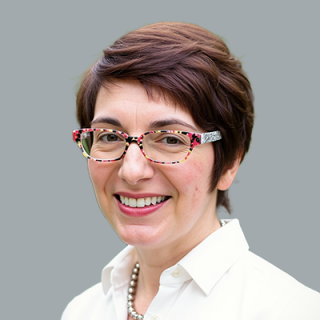Blog
SPAC Risk Update with Doug Ellenoff: What to Expect in 2024
For the first SPAC Notebook of 2024, I was pleased to speak once again with Doug Ellenoff, the founder of Ellenoff Grossman & Schole and someone who has been at the forefront of the SPAC market since its inception. In addition to evaluating SPAC activity in 2023, we looked at what to expect for this year.
Here are highlights of our conversation. You can also watch the full discussion below.
2023 SPAC Stats: Disruption and Turbulence
Yelena Dunaevsky: Let's set the stage with some statistics. We had 31 SPAC IPOs that priced in 2023 compared to 86 in 2022 and 613 in 2021. The decreasing number of IPOs is not a surprising element, considering what's been happening in the general market.
The situation on the deal side has been a little better. There were 98 deals that closed in 2023, which is slightly lower than 102 in 2022. But I've noticed the value of these deals was a lot lower than the value we saw in the previous year.
Doug Ellenoff: The numbers tell the story of the disruption and turbulence that is the aftermath of the euphoric 2021. Throw in the treasury-related tax issue, and you have a cauldron of hot soup. It was a mess.
As you point out, over half of those same 600+ companies (from 2021) sought liquidation at some point in the last couple of years, which is very unfortunate. It's also unfortunate for the sponsors who put up billions of dollars in risk capital. One of the stories that regulators and business journalists don't like to write about is that all that money actually found its way into the hands of the public. So while the SPAC investors made out quite nicely, the sponsors found themselves on the short side of the stick and lost a lot of money.
The other half got their deals done or are in the process of getting them done. The combined number of SPACs from 2022 and 2023—about 200—is far better and more robust than the US IPO market.
Yelena Dunaevsky: We've seen SPAC sponsors in 2023 having to jump through various hoops to get their deals done, causing delays and additional costs. Some have dropped out of the market entirely, never to come back, which is a shame. Will it still be so difficult for sponsors in 2024?
Doug Ellenoff: When we had so many deals between mid-2020 through the end of 2023, with 600+ in 2021, it polluted all of the data because there were too many deals in the marketplace chasing too few targets. I do think we are in a better place now with under 200 listed SPACs.
There are always thousands of private companies considering going public either through a traditional listing, a direct listing, or a SPAC acquisition. I was not surprised by 31 SPAC IPOs last year and think there will be at least twice as many this year.
The only thing that’s important is whether there is capital to support the proposed business combination SPAC sponsors bring to market. And are those deals structured in a way that gives the public participating in those transactions legitimate options at trading above where those investors invest?
I’d like to think that everything we’ve seen over the last few years has nothing to do with what we’ll see over the next couple of years.
But people who got burned because they put up a lot of money and did not make money may very well never come back to the SPAC market. You sprinkle a bit of regulatory hostility on top of that, and people ask why they should bother putting themselves in a reputational bind by participating.
However, there's a pickup in SPAC IPO activity, which is very encouraging. Not surprisingly, the first to the feast are the serial SPAC sponsors who previously made money in the program and are oppositional by nature. So while everyone else runs away, they're going straight into the fire.
Yelena Dunaevsky: I've seen a couple of those teams reach out to us for advice on how to approach the new market. But is anyone doing anything new with the SPAC structure? Are there any innovations, like the SPARC (Special Purpose Acquisition Rights Company), for example, in the market?
New SPAC Structures: Have There Been Any Innovations in the Market?
Doug Ellenoff: You have to give Bill Ackman credit. He certainly knows how to make a headline. But the SPARC is only helpful to him because he's trying to take care of those investors who participated in his original SPAC. Nobody else is rushing to the Securities and Exchange Commission (SEC) or the market with "son of SPARC" because it just doesn't really work for anybody else.
What we've seen in the SPAC market in the last 90 days is a willingness by SPAC funds that invest in SPAC IPOs to cut some slack to the sponsors in recognition of the risk that they have taken. The terms are more beneficial to sponsors than they have been in quite some time. Other than that, it is largely the same vehicle it has been for a couple of decades. We welcome innovation and some people are experimenting with some tweaks, and we’ll see more of that this year.
There remains a fundamental need for an alternative way for a private company to go public other than through an IPO process or direct listing. We're fans of IPOs; we're fans of direct listings. But high-end companies coming out of Silicon Valley are not the only companies that deserve to enter our public markets.
While the current SEC may have hostility towards other smaller market capitalization companies entering the public markets, the SPAC vehicle stood for that proposition and continues to be the best alternative way for a private company to enter the public markets without an underwriter.
Yelena Dunaevsky: There also were some interesting innovations in the insurance world last year that I think will continue into 2024. One of them is the combination policy coverage for all entities post-close, which we at Woodruff Sawyer pioneered in 2023. The more products (like insurance and banking products) evolve to fit the needs of the market, the better for everyone.
Litigation Trends, Enforcement Actions, and the Insurance Perspective
Yelena Dunaevsky: What's happening on the litigation side directly affects what we see in the insurance coverage space. All the insurance underwriters we speak to watch this space very carefully, and we at Woodruff Sawyer watch it very carefully as well. What jumped out on the SPAC litigation front for you, Doug, in 2023?
Doug Ellenoff: Markets are dynamic. They process the information they receive in real time and make appropriate adjustments to correct any problems or take advantage of things they see that are advantageous to them.
So Delaware courts can get high on the soap box and find fault with conflicts of interest and some of the director decisions that have been made in the past couple of years, but a SPAC is a newly formed vehicle and can choose where to incorporate. Many sponsors have started choosing to incorporate in jurisdictions other than Delaware.
| There may be some sponsors with specific reasons for continuing with Delaware. But we are seeing a huge shift, and I think we'll see 95% of SPACs not with Delaware going forward. |
And I understand some of these decisions. Many of the Delaware cases are just breach of fiduciary duty cases. And if the board did not know what they were doing, didn’t get fairness opinions, weren’t cognizant or sensitive to the conflicts of interest independent of the SPAC structure, then yes, you’re going to end up in Delaware or other courts and liability is appropriately assessed.
But I believe the vast majority of claims are opportunistic in nature based upon the novel structure of a SPAC. This resulted in the Delaware courts taking positions, like saying that good disclosure doesn't clean up some of those issues, that are actually inapposite to some of their historic case law.
Yelena Dunaevsky: There have been a few cases and enforcement actions, but like you said, not a huge amount. One of the cases was, for me, sort of a gratifying moment. I saw the Southern District of New York in DraftKings throw out a case that was based entirely on a short seller report that was not substantiated in any way.
At least 30% of SPAC securities class actions are driven by short-seller reports. When those come out, the media runs with it, not stopping to think of whether the short sellers have a conflict of interest and whether any of the issues they cite have been substantiated. I think we'll see a few more similar court decisions in 2024.
Initially, there was a little panic on the carrier side because this wave of SPACs in 2020 and 2021 was a new vehicle for them to understand. And there was so much negative attention from the media and the SEC that underwriters were generally very jittery when it came to SPACs.
Recently, however, there's definitely been a shift in the insurance market, where the carriers are a lot more open to looking at SPACs and doing something more innovative to match what is needed by the SPAC vehicle and the SPAC structure. Also, the general D&O insurance market is such that there’s a lot more competition among carriers, so we are confident that we’ll be able to continue to have good coverage and premium options into 2024.
What Does the Future Hold for SPACs?
Doug Ellenoff: I think we are going back to the 2019/2020 marketplace where the deals are less pre-revenue and more mature, with real revenue and real operating metrics. Just interesting businesses that don't capture headlines.
| This year, I would expect we go back to a normalized marketplace. I'll say 75 to 100—which I think is a responsible number—of publicly traded shell vehicles. There are thousands of potential targets for that sort of number. |
It will go back to serial SPAC sponsors who know how to use the vehicle in a way that will reduce risk and some of the conflicts that you saw in Delaware. We've already seen a thinning out of the banks involved in the program and the law firms that will take on the risk associated with how they pay fees.
So, I'm glad we're returning to much less intrigue than what we've experienced collectively as a community in the last couple of years.
Yelena Dunaevsky: Yes, hopefully, there will be a lot less heartache and tears as well.
|
Other topics that were discussed included how teams are handling the 1% excise tax, what we can conclude from the recent wave of SPAC-related bankruptcies, and the trends around SPAC team swaps. For insights on these topics, watch the full discussion. |
Visit our SPACs industries page for more insights and resources related to Special Purpose Acquisition Companies and be on the lookout for an upcoming SPAC Notebook post discussing the newly released final SEC SPAC rules.
Author
Table of Contents









